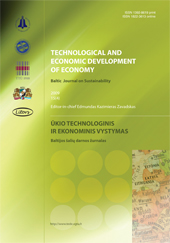Hybrid Toolboxes: Conceptual and Empirical Analysis of Blending Patterns in Application of Hybrid Media
Hybrid Toolboxes: Conceptual and Empirical Analysis of Blending Patterns in Application of Hybrid Media
Author(s): Michael Reiss, Dirk SteffensSubject(s): Economy
Published by: Vilnius Gediminas Technical University
Keywords: hybrid media concepts; hybrid management concepts; blended learning; electronic communication; change management; e-learning; higher education
Summary/Abstract: Hybrid media concepts, i.e. especially combinations of face-to-face instruments and electronic media, represent a standard in many fields of application for quite a long time. Such combinations of diverse, and thus hybrid instruments are meanwhile quite commonly used, for example, in marketing, in retail business, for communication in virtual enterprises, in internal communication processes, in human resource development and in higher education. By combining strengths of two or more media and by mutually compensating their weaknesses, hybrid media concepts aim at enhancing performance with respect to effectiveness and efficiency. So far, however, scientific discussion lacks a common understanding of the architecture of hybrid media concepts as well as empirical evidence on the application of hybrid media in practice. Hence, it is unclear to what extent the performance potential of hybrid media concepts is utilized in different application fields and what the drivers of the use and performance of hybrid media concepts are. This article presents and discusses both a conceptualization of hybrid media in terms of diversity, proportions and coupling of hybrid concepts and empirical evidence on hybrid media concepts in two typical application fields: internal communication in change management and blended learning in higher education.
Journal: Technological and Economic Development of Economy
- Issue Year: 2010
- Issue No: 2
- Page Range: 305-326
- Page Count: 22
- Language: English

